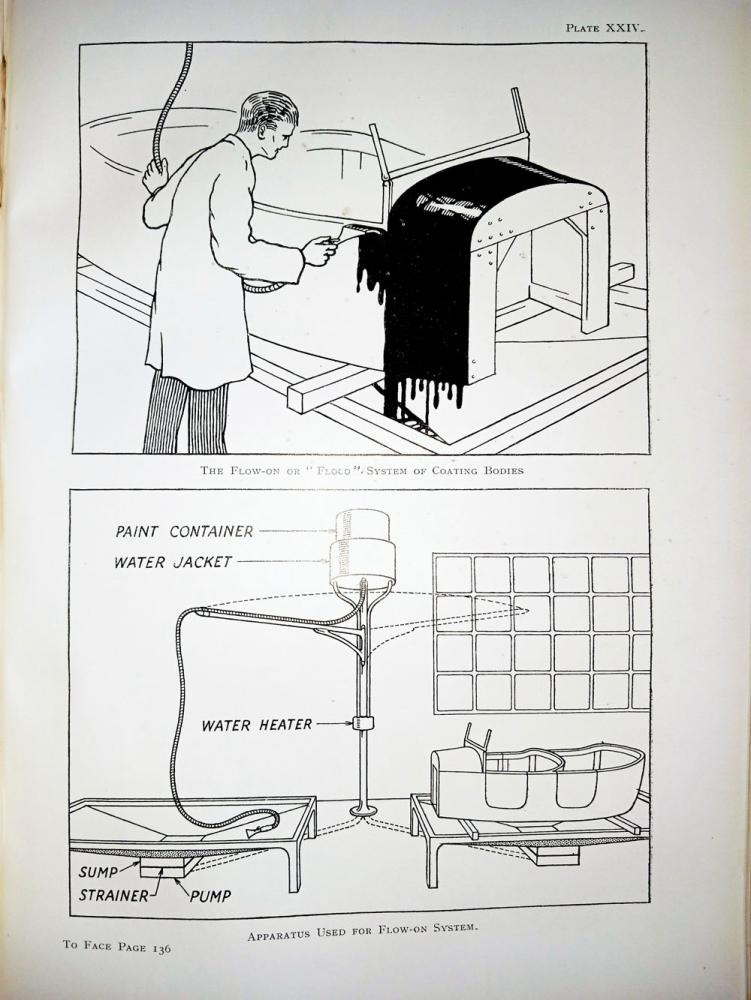A few disjointed comments... (sorry)
I was taught that white spirit is for cleaning brushes, not for thinning paint; PPA or Owatrol are good products for helping enamel flow. Craftmaster is beautiful paint, but (like most modern enamels of my acquaintance) you have to work fast to keep a wet edge going, and to achieve that it needs to be applied fairly generously. I dare say Mr. Wilson knows what he's talking about but I have no experience of his product or firm. I would add that white spirit tends to kill the gloss, and some might understandably consider that desirable.
Enamel paint is not suitable for cutting back and polishing - not if it is applied as was intended by the maker. There are many posts on the internet about rolling thin coats and cutting back Rustoleum - but you must ask yourself what standard of finish is achieved, and how long it lasts.
When I recently tried to sand my RP back to bare metal I gave up because the base coats (original, I think) were incredibly tough! I contented myself with taking off the gloss coats (over-painted in the 50's or 60's, I'd guess), keying the surface and priming over.
I feel fairly confident that spraying was the general norm for OE by the time Austin started building the Seven, though brush painting lingered in the aftermarket for a fair while.
Paint 'flowing' was a thing though, and might well have been used for certain Austin parts. There were even mass production systems for effectively hosing paint over the car and catching the run-off in a drip tray, where it was pumped back up to the header tank. Of course the paint was especially formulated for the task. It's not so bizarre when you consider the traditional method of coach painting - 1 man applied a very generous coat of paint, and a second man followed along behind him laying off i.e. smoothing it out and removing the excess. The aim was to apply a coat just short of the amount which would run or sag.
"Motor Car and Coach Painting for Private, Commercial and Mass Output" by Charles Oliver is a good source for anyone very keen to know more, though it slightly pre-dates the A7 era I think. The author observed that even show cars of the time often exhibited flaws in their paintwork. I'm inclined to think budget cars of the 20's were somewhat less than 'immaculate', and restorations look better with a slightly rough and ready paint job than one which cost many thousands to perfect.

I was taught that white spirit is for cleaning brushes, not for thinning paint; PPA or Owatrol are good products for helping enamel flow. Craftmaster is beautiful paint, but (like most modern enamels of my acquaintance) you have to work fast to keep a wet edge going, and to achieve that it needs to be applied fairly generously. I dare say Mr. Wilson knows what he's talking about but I have no experience of his product or firm. I would add that white spirit tends to kill the gloss, and some might understandably consider that desirable.
Enamel paint is not suitable for cutting back and polishing - not if it is applied as was intended by the maker. There are many posts on the internet about rolling thin coats and cutting back Rustoleum - but you must ask yourself what standard of finish is achieved, and how long it lasts.
When I recently tried to sand my RP back to bare metal I gave up because the base coats (original, I think) were incredibly tough! I contented myself with taking off the gloss coats (over-painted in the 50's or 60's, I'd guess), keying the surface and priming over.
I feel fairly confident that spraying was the general norm for OE by the time Austin started building the Seven, though brush painting lingered in the aftermarket for a fair while.
Paint 'flowing' was a thing though, and might well have been used for certain Austin parts. There were even mass production systems for effectively hosing paint over the car and catching the run-off in a drip tray, where it was pumped back up to the header tank. Of course the paint was especially formulated for the task. It's not so bizarre when you consider the traditional method of coach painting - 1 man applied a very generous coat of paint, and a second man followed along behind him laying off i.e. smoothing it out and removing the excess. The aim was to apply a coat just short of the amount which would run or sag.
"Motor Car and Coach Painting for Private, Commercial and Mass Output" by Charles Oliver is a good source for anyone very keen to know more, though it slightly pre-dates the A7 era I think. The author observed that even show cars of the time often exhibited flaws in their paintwork. I'm inclined to think budget cars of the 20's were somewhat less than 'immaculate', and restorations look better with a slightly rough and ready paint job than one which cost many thousands to perfect.




